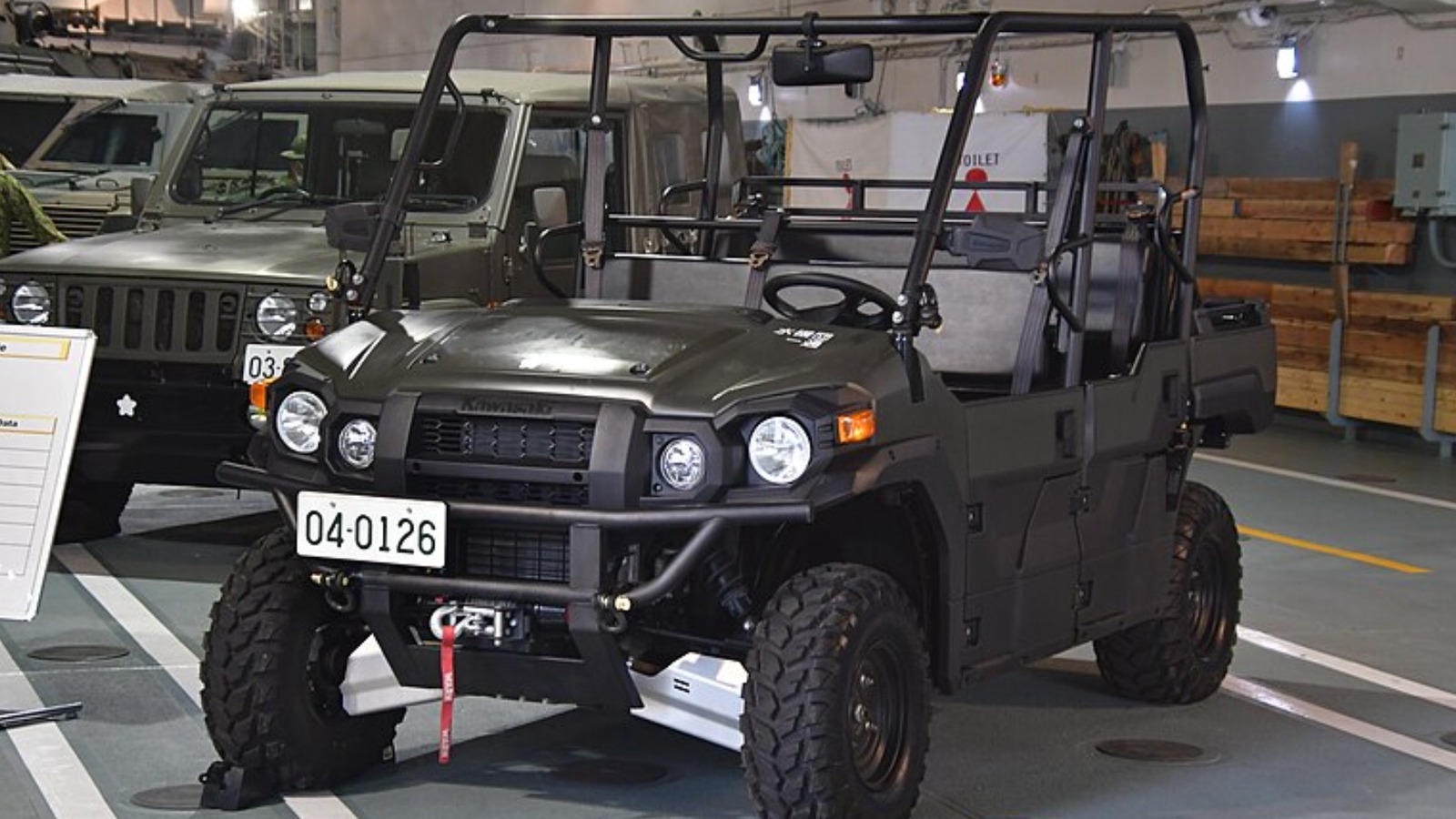
While there’s a lot of enjoyment to be had in flying down the highway at appropriately high speeds and going for a slower cruise around town streets, off-roading is another kind of fun. Navigating trails and taking in all of nature’s scenery is a blast — so long as you keep a few important factors in mind before setting out on your first off-road adventure. One of the most fun and reliable vehicles one can take off the beaten path is the Kawasaki MULE (Multi-Use Light Equipment), which is tailor-made for off-roading and can go pretty fast.
The first MULE, the MULE 1000, was introduced back in 1988, and in the decades since, the MULE has become a favorite among workers and off-roaders alike. Each subsequent model of Kawasaki’s now-adored utility task vehicle has improved upon the last, with more power, stronger maneuverability, and increased cab size in each, to name a few of the MULE’s key innovations. To celebrate 30 years of the MULE, Kawasaki delivered two brand new models for customers to try out: the 2018 MULE PRO-FXR and the 2018 MULE 4000 Trans, each with their own sets of bells and whistles to pull potential buyers in.
Considering how powerful and large the Kawasaki MULE has become over the years, evoking the image of a toned-down Jeep, one has to wonder, are they street legal? Here’s what you need to know.
[Featured image by Hunini via WikiMedia Commons | Cropped and scaled | CC BY-SA 4.0]
When looking over the official Kawasaki website’s MULE section, it’s abundantly clear from the images and text that these vehicles are intended almost exclusively for off-roading. They’re advertised as best-suited for carrying large payloads across worksites, taking on rugged terrain, and embarking on off-road excursions. Digging deeper, manufacturer labels explicitly state that MULEs are sold for off-road use only. Additionally, they fail to meet the United States’ Federal Motor Vehicle Safety Standards in more ways than one, from their lack of rearview mirrors to missing windshields.
However, that’s not to say that they can’t be used on any roadways at all. Even though MULEs aren’t street legal on a federal level, state and local laws vary on the matter. In more mountainous and rural areas, you might be able to get by with brief trips with a Slow Moving Vehicle sign, but that’s no guarantee. If you’re curious about the legalities surrounding MULEs on the road in your area, it’s in your best interest to do some research into your local regulations before hitting the road. Also, you’ll probably want to look into kits and components to make your MULE street legal, to further ensure you’re on the right side of the law.
Alternatively, if you want something you know you can safely and legally drive on the road and off, you could always set your sights on one of the many new vehicles that are ready to go off-roading fresh off the lot.
[Featured image by User:Mattes via WikiMedia Commons | Cropped and scaled | CC BY-SA 3.0]




